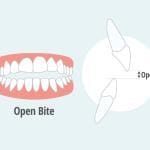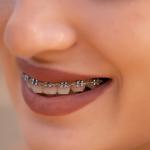Orthodontic treatments have come a long way in recent years, offering a range of options to correct misaligned teeth and jaw discrepancies. The Twin Block Appliance is one such tool that has gained popularity for its effectiveness in treating Class II malocclusions, a condition where the upper teeth significantly overlap the lower teeth. This comprehensive article aims to provide an in-depth understanding of the Twin Block Appliance, including its components, mechanism, applications, advantages, disadvantages, and overall efficacy in orthodontic practice.
Introduction to the Twin Block Appliance
The Twin Block Appliance, also known as the Twin Block Functional Appliance, is a widely used orthodontic device designed to treat Class II malocclusions, which involve an overgrowth of the upper jaw or an undergrowth of the lower jaw, or a combination of both. It consists of upper and lower removable acrylic plates that work together to reposition the jaw into a more harmonious relationship, ultimately achieving a more balanced bite and facial profile.
Components of the Twin Block Appliance
- Upper Plate
- Lower Plate
Upper Plate
The upper plate of the Twin Block Appliance is custom-made for each patient. It covers the upper teeth and often includes a bite block or inclined planes on the molars to encourage the lower jaw to move forward.
Lower Plate
The lower plate also custom-made, fits over the lower teeth and contains a corresponding bite block or inclined plane that interacts with the upper bite block. It positions the lower jaw in a more forward position, aiding in the correction of the overjet.
Mechanism of Action
The Twin Block Appliance functions on the principle of encouraging the lower jaw to grow forward while discouraging backward growth of the upper jaw. This is achieved through the interlocking inclined planes or bite blocks on the upper and lower plates. When the patient bites down, the inclined planes guide the lower jaw into a more forward position, promoting a more balanced bite and improving the overall facial profile.
Applications of the Twin Block Appliance
The Twin Block Appliance is primarily utilized for treating Class II malocclusions, where the upper teeth protrude significantly over the lower teeth. This condition can cause functional issues, aesthetic concerns, and potentially lead to temporomandibular joint disorders (TMJ). The appliance is commonly prescribed for growing patients, typically during their adolescent years when jaw growth is still ongoing and more easily influenced.
Advantages of the Twin Block Appliance
- Non-Invasive
- Growth Modification
- Improved Facial Aesthetics
- Speech Improvement
Non-Invasive
Being a removable appliance, the Twin Block does not require any surgical intervention. This makes it a less invasive treatment option compared to some other orthodontic approaches.
Growth Modification
The Twin Block Appliance is effective in modifying jaw growth, particularly in growing individuals. It helps guide the lower jaw into a more forward position, thus addressing the underlying skeletal issue.
Improved Facial Aesthetics
By correcting the overjet and achieving a more balanced bite, the Twin Block Appliance contributes to improved facial aesthetics, which can boost the patient’s self-confidence.
Speech Improvement
The appliance may help in improving speech difficulties associated with Class II malocclusions, enhancing the patient’s overall quality of life.
Disadvantages of the Twin Block Appliance
- Compliance Dependence
- Initial Discomfort
Compliance Dependence
The success of the Twin Block Appliance relies heavily on patient compliance, as it needs to be worn consistently as prescribed by the orthodontist to achieve the desired results.
Initial Discomfort
Patients often experience initial discomfort or difficulty speaking due to the presence of the bite blocks. However, this typically improves with time as they adapt to the appliance.
Who Needs a Twin Block Appliance?
The Twin Block Appliance is typically recommended for individuals who have a specific type of malocclusion known as Class II malocclusion. Class II malocclusion is characterized by the upper teeth significantly protruding over the lower teeth, resulting in an overjet. This condition can be caused by various factors, including genetics, jaw structure, and habits such as thumb sucking or mouth breathing during childhood.
Here are some individuals who may benefit from the use of the Twin Block Appliance:
- Growing Adolescents
- Patients with Class II Malocclusion
- Patients with Skeletal Discrepancies
- Those Seeking Non-Invasive Treatment
- Patients Aiming for Improved Facial Aesthetics
- Patients with Speech Difficulties
- Individuals with TMJ Issues
Growing Adolescents
The Twin Block Appliance is often prescribed for adolescents, especially during their growth spurt years. The appliance takes advantage of the ongoing growth to guide the lower jaw forward and correct the overjet.
Patients with Class II Malocclusion
Individuals diagnosed with Class II malocclusion, where the upper teeth protrude significantly over the lower teeth, can benefit from the Twin Block Appliance. This appliance helps in repositioning the jaw and achieving a more balanced bite.
Patients with Skeletal Discrepancies
The Twin Block Appliance is effective for patients with underlying skeletal discrepancies, particularly an overgrowth of the upper jaw or an undergrowth of the lower jaw, or a combination of both. The appliance can aid in modifying the growth of the jaws to achieve a better relationship.
Those Seeking Non-Invasive Treatment
Individuals who prefer a non-invasive orthodontic treatment option may opt for the Twin Block Appliance, as it does not involve surgical procedures and aims to modify the jaw position through functional and growth guidance.
Patients Aiming for Improved Facial Aesthetics
Patients who are concerned about their facial appearance due to the prominence of their upper teeth or an imbalanced facial profile resulting from a Class II malocclusion can find the Twin Block Appliance beneficial. It can help in achieving a more harmonious facial aesthetic.
Patients with Speech Difficulties
Class II malocclusion can sometimes cause speech difficulties. The Twin Block Appliance, by correcting the overjet, may aid in improving speech, making it a viable option for individuals experiencing speech-related challenges.
Individuals with TMJ Issues
Temporomandibular joint (TMJ) issues can sometimes be associated with malocclusions. The Twin Block Appliance, by correcting the bite and jaw position, may alleviate or prevent TMJ problems.
It’s essential to consult with an orthodontic specialist to determine if the Twin Block Appliance is the appropriate treatment for an individual based on their specific orthodontic needs and overall oral health. Orthodontists will conduct a thorough assessment and design a tailored treatment plan to achieve the best outcomes.
Efficacy and Success Rates
The efficacy of the Twin Block Appliance is well-documented in the field of orthodontics. Research studies and clinical cases have shown successful outcomes in correcting Class II malocclusions and improving facial harmony. The appliance has a high success rate, especially when used in growing patients where jaw growth can be influenced.
Why Do People Get Twin Block?
People opt for the Twin Block Appliance for several reasons, primarily related to addressing specific orthodontic issues, improving facial aesthetics, and enhancing overall oral health. Here are some key reasons why individuals choose to undergo treatment with the Twin Block Appliance:
- Correction of Class II Malocclusion
- Promotion of Jaw Growth and Development
- Non-Invasive Treatment Option
- Improvement of Facial Aesthetics
- Enhanced Speech and Functionality
- Prevention of Temporomandibular Joint (TMJ) Issues
- Customized Treatment Plans
- Early Intervention for Growing Patients
Correction of Class II Malocclusion
The primary reason for using the Twin Block Appliance is to correct Class II malocclusion, where the upper teeth significantly protrude over the lower teeth. This condition can lead to functional problems, difficulty in biting and chewing, speech issues, and aesthetic concerns. The Twin Block Appliance helps in repositioning the jaw and aligning the teeth to achieve a more balanced bite.
Promotion of Jaw Growth and Development
The appliance takes advantage of the growth potential in younger patients, typically adolescents, to guide the lower jaw’s growth in a more forward position. By encouraging proper jaw development during a crucial growth phase, it helps achieve a more harmonious relationship between the upper and lower jaws.
Non-Invasive Treatment Option
Many individuals prefer non-invasive orthodontic treatments over surgical options. The Twin Block Appliance is removable and does not involve any surgical procedures, making it an attractive choice for those seeking a less invasive approach to correcting their malocclusion.
Improvement of Facial Aesthetics
Class II malocclusion can affect facial aesthetics, creating an unbalanced or protruding appearance. The Twin Block Appliance helps in realigning the jaws and teeth, ultimately contributing to a more harmonious facial profile and a pleasing smile.
Enhanced Speech and Functionality
Class II malocclusion can impact speech clarity and overall functionality of the mouth. By correcting the overjet and aligning the teeth and jaws, the Twin Block Appliance can lead to improved speech, better chewing efficiency, and enhanced overall oral function.
Prevention of Temporomandibular Joint (TMJ) Issues
Malocclusions, especially Class II, can contribute to TMJ problems. The Twin Block Appliance aids in correcting the bite and jaw position, potentially preventing or alleviating TMJ issues and associated discomfort.
Customized Treatment Plans
The Twin Block Appliance can be customized to suit each patient’s specific needs. Orthodontists tailor the design and adjustments of the appliance based on the patient’s age, severity of malocclusion, and growth pattern to optimize treatment outcomes.
Early Intervention for Growing Patients
Early intervention using the Twin Block Appliance in growing patients allows orthodontists to guide jaw growth in a favorable direction. Starting treatment during a patient’s growth phase can often lead to shorter overall treatment time and better outcomes.
In summary, people opt for the Twin Block Appliance to correct Class II malocclusion, promote proper jaw growth, enhance facial aesthetics, improve oral function and speech, and choose a non-invasive treatment approach. The decision to use this appliance is made in consultation with an orthodontist who assesses the individual’s orthodontic needs and develops a customized treatment plan to achieve the desired results.
What Age is Best for Twin Block?
The ideal age for using the Twin Block Appliance is during a child’s growth spurt, typically around early adolescence. Orthodontic treatment, including the use of functional appliances like the Twin Block, is most effective when the patient is in their growth phase because the jaw is still developing and can be guided to achieve the desired changes in alignment and relationship between the upper and lower jaws.
The optimal age range for initiating treatment with the Twin Block Appliance is usually between 10 to 14 years old. At this age, most children have a mix of baby teeth and permanent teeth, and their jaws are still growing. The goal is to harness this growth potential to encourage proper alignment and positioning of the jaw to correct Class II malocclusions.
Starting treatment during this growth phase allows the Twin Block Appliance to guide the lower jaw forward, promoting growth in a more favorable direction and addressing the overjet (where the upper teeth protrude significantly over the lower teeth). The appliance aims to achieve a more balanced bite and facial profile as the jaw continues to develop.
However, it’s important to note that the suitability of treatment with the Twin Block Appliance is ultimately determined on an individual basis. An orthodontic evaluation, including a thorough examination of the patient’s dental and skeletal development, is crucial to determine the best time to begin treatment and whether the Twin Block Appliance is the appropriate option for the specific case.
Orthodontists will assess factors such as the severity of the malocclusion, the patient’s growth pattern, and overall oral health to create a tailored treatment plan. They may recommend the Twin Block Appliance or alternative orthodontic interventions based on the patient’s unique needs and circumstances.
In summary, the best age for using the Twin Block Appliance is during early adolescence, typically between 10 to 14 years old, when the patient is in their growth phase and jaw development can be guided effectively to achieve optimal treatment outcomes.
Does Twin Block Work in Adults?
The Twin Block Appliance is primarily designed for use in growing individuals, particularly adolescents, whose jaws are still actively growing and can be guided into a more favorable position. Due to its mechanism, which involves encouraging forward growth of the lower jaw, the effectiveness of the Twin Block Appliance is limited in fully developed adults where the jaw growth has ceased.
In adults, the bones in the jaw have typically finished growing, making it more challenging to achieve significant skeletal changes using functional appliances like the Twin Block. The focus of orthodontic treatment in adults often shifts more towards methods like braces, clear aligners, or even orthognathic surgery (jaw surgery) to address malocclusions and facial discrepancies.
However, that being said, the Twin Block Appliance or similar functional appliances can still have some role in adult orthodontics, especially in cases where the treatment goals are related to dental alignment and functional improvement rather than significant skeletal changes. For instance:
- Dental Alignment
- Temporomandibular Joint (TMJ) Issues
- Pre-surgical Orthodontic Preparation
Dental Alignment
In cases where the misalignment is mainly due to dental issues and not severe skeletal discrepancies, functional appliances like the Twin Block may help in improving the alignment of the teeth and achieving a more balanced bite.
Temporomandibular Joint (TMJ) Issues
Functional appliances can sometimes be used to manage or alleviate symptoms of TMJ disorders in adults by improving the jaw’s functional relationship.
Pre-surgical Orthodontic Preparation
In some cases where orthognathic surgery is planned to correct significant jaw discrepancies, functional appliances may be used before surgery to help align the teeth and optimize the surgical outcome.
In summary, while the Twin Block Appliance is most effective in growing individuals, it may still have a role in certain adult cases, particularly for addressing dental alignment and improving temporomandibular joint function. However, for adults requiring significant skeletal changes, a comprehensive orthodontic approach involving traditional braces, clear aligners, or orthognathic surgery is often more appropriate and effective. A thorough evaluation by an orthodontist is essential to determine the most suitable treatment plan based on individual needs and circumstances.
Conclusion
The Twin Block Appliance represents a significant advancement in orthodontics, offering an effective and non-invasive solution for Class II malocclusions. Its ability to modify jaw growth and improve facial aesthetics makes it a valuable tool in orthodontic practice. Despite potential challenges like patient compliance and initial discomfort, the overall success rates and positive outcomes emphasize its importance in achieving functional and aesthetic harmony in orthodontic patients. As orthodontic research and technology continue to progress, the Twin Block Appliance is likely to evolve, further enhancing its efficacy and usability in the treatment of malocclusions.





